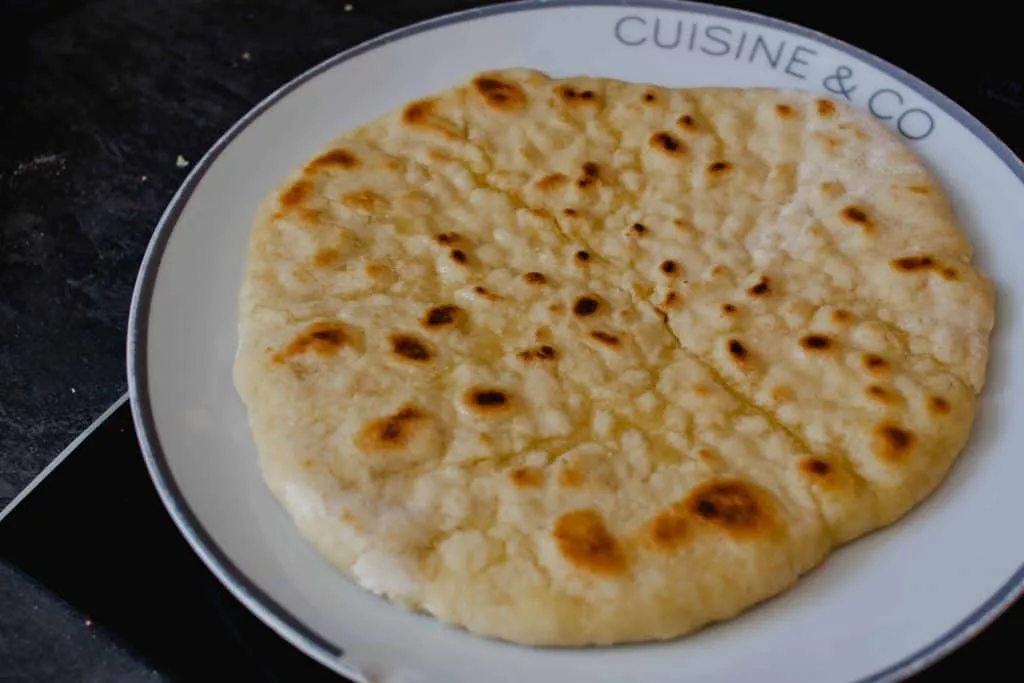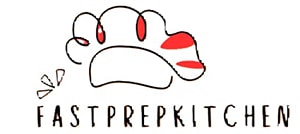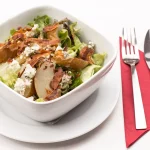The Best Fluffy Pancakes recipe you will fall in love with. Full of tips and tricks to help you make the best pancakes.
Arabic breakfasts are all about freshness, flavor, and simplicity—and at the heart of it lies warm flatbread paired with a variety of delicious spreads. From fluffy pita and traditional khubz to manakish seasoned with za’atar, Arabic flatbreads are the perfect base for creamy dips and toppings. Popular spreads like hummus, labneh, baba ganoush, and tahini turn a simple piece of bread into a satisfying meal full of Middle Eastern charm.
In this post, we’ll explore some of the most loved Arabic flatbread and spreads recipes you can easily try at home. Whether you’re preparing a light breakfast, building a mezze platter, or just looking for new ideas to enjoy bread, these recipes bring authentic flavor to your table in the simplest way.
Traditional Arabic Flatbread Recipes to Try
Flatbread is a staple of every Arabic breakfast. Light, warm, and perfect for dipping into flavorful spreads, these breads are simple to make at home with a few pantry ingredients. Below are some traditional Arabic flatbread recipes you can try.

Pita Bread (Khubz)
A fluffy and slightly chewy bread, perfect for stuffing or dipping.
Ingredients (makes 8 rounds):
- 3 cups all-purpose flour
- 1 cup warm water (around 40°C / 105°F)
- 2 tsp instant yeast
- 1 tsp sugar
- 1 tsp salt
- 2 tbsp olive oil
Method:
- Mix warm water, yeast, and sugar. Let sit for 5–10 minutes until foamy.
- Add flour, salt, and olive oil. Knead into a soft dough (8–10 minutes).
- Cover and let rise for 1 hour until doubled.
- Divide into 8 balls, roll into circles (about 15 cm / 6 inches).
- Bake in a very hot oven (250°C / 480°F) for 5–7 minutes until puffed.
Manakish (Za’atar Flatbread)
A savory breakfast bread topped with za’atar and olive oil.
Ingredients (makes 6 flatbreads):
- 3 cups all-purpose flour
- 1 cup warm water
- 2 tsp instant yeast
- 1 tsp sugar
- 1 tsp salt
- 3 tbsp olive oil
- ½ cup za’atar spice mix
- ½ cup olive oil (for topping paste)
Method:
- Prepare dough as for pita.
- Divide into 6 balls, roll into thin circles.
- Mix za’atar with olive oil to form a paste.
- Spread topping evenly and bake at 220°C (425°F) for 8–10 minutes.
Saj Bread (Markook)
A thin, paper-like bread cooked on a hot dome (or skillet at home).
Ingredients (makes 10 flatbreads):
- 3 cups all-purpose flour
- 1 tsp salt
- 1 ½ cups warm water
- 1 tbsp olive oil
Method:
- Mix flour, salt, water, and oil into a soft dough. Knead well.
- Rest for 30 minutes, then divide into 10 small balls.
- Roll each out very thinly (almost transparent).
- Cook quickly on a hot skillet or saj until golden spots appear.
Whole Wheat Khubz
A healthier version of pita, rich in fiber.
Ingredients (makes 8 rounds):
- 2 cups whole wheat flour
- 1 cup all-purpose flour
- 1 cup warm water
- 2 tsp instant yeast
- 1 tsp sugar
- 1 tsp salt
- 2 tbsp olive oil
Method:
- Mix yeast, sugar, and warm water. Let activate.
- Combine with flours, salt, and olive oil. Knead until smooth.
- Let rise for 1 hour, then shape into 8 rounds.
- Bake at 240°C (465°F) for 6–8 minutes until puffed.
👉 These breads can be served warm with hummus, labneh, baba ganoush, or olive oil and za’atar, making them the foundation of a hearty Arabic breakfast.
Arabic Spreads for a Flavorful Breakfast
No Arabic breakfast is complete without creamy, rich, and flavorful spreads that pair perfectly with fresh flatbread. These traditional dips are simple to prepare and add variety to your morning table.

Hummus (serves 4–6)
A smooth chickpea dip blended with tahini, garlic, lemon juice, and olive oil.
Ingredients:
- 1 can (400 g / 15 oz) cooked chickpeas, drained
- 3 tbsp tahini (sesame paste)
- 2 tbsp fresh lemon juice
- 2 tbsp olive oil (plus more for serving)
- 1 garlic clove, minced
- ½ tsp salt
- 2–3 tbsp cold water
Method:
- Blend chickpeas, tahini, lemon juice, garlic, and salt until smooth.
- Add cold water gradually to reach desired creaminess.
- Drizzle with olive oil and sprinkle with paprika or cumin before serving.
Labneh (serves 4)
A thick, tangy yogurt spread often drizzled with olive oil.
Ingredients:
- 2 cups full-fat plain yogurt
- ½ tsp salt
- 1–2 tbsp olive oil (for topping)
- 1 tsp za’atar (optional garnish)
Method:
- Mix yogurt with salt. Place in a cheesecloth-lined strainer over a bowl.
- Refrigerate for 12–24 hours until thick and spreadable.
- Serve topped with olive oil and za’atar.
Baba Ganoush (serves 4–6)
A smoky eggplant dip with tahini, lemon, and garlic.
Ingredients:
- 2 medium eggplants (about 700 g / 1.5 lbs)
- 2 tbsp tahini
- 2 tbsp lemon juice
- 1 garlic clove, minced
- 2 tbsp olive oil (plus more for serving)
- ½ tsp salt
- Optional: pomegranate seeds for garnish
Method:
- Roast or grill eggplants until skin is charred and flesh soft (about 35 minutes at 200°C / 400°F).
- Scoop out the flesh and mash or blend with tahini, lemon, garlic, and salt.
- Drizzle with olive oil and garnish before serving.
Tahini Dip (serves 4)
A nutty sesame paste thinned with lemon juice and garlic.
Ingredients:
- ½ cup tahini
- 2 tbsp lemon juice
- 1 garlic clove, minced
- ¼ cup cold water (add more if needed)
- ½ tsp salt
Method:
- In a bowl, whisk tahini with lemon juice, garlic, and salt.
- Slowly add water while stirring until smooth and creamy.
- Adjust seasoning and serve with warm bread or veggies.
Essential Utensils for Making Flatbread and Spreads
To prepare a homemade Arabic breakfast with fresh flatbreads and flavorful spreads, you’ll need a few simple kitchen tools:
For Flatbreads
- Large mixing bowl – for combining and kneading dough
- Kitchen scale and measuring cups/spoons – for accurate measurements
- Rolling pin – to roll out the dough evenly
- Baking sheet or pizza stone – for baking pita and manakish
- Cast-iron skillet or griddle – perfect for cooking saj bread
- Clean kitchen towels – to cover dough and keep bread soft
For Spreads
- Food processor or blender – essential for smooth hummus and baba ganoush
- Strainer and cheesecloth – for draining yogurt to make labneh
- Small serving bowls – to present hummus, labneh, baba ganoush, and tahini
- Sharp knife – for chopping vegetables and garnishes
Optional but Helpful
- Mortar and pestle – for crushing garlic or preparing a za’atar paste
- Airtight jars or containers – for storing spreads and keeping them fresh
How to Enjoy Flatbread and Spreads for Breakfast
Arabic flatbread becomes the star of the table when paired with delicious spreads and fresh sides. A traditional breakfast is more than just bread—it’s a whole experience of flavors, textures, and simple ingredients enjoyed together. Here are some of the best ways to enjoy your flatbread and spreads for breakfast:
Create a Breakfast Mezze Platter
- Serve warm flatbread with small bowls of hummus, labneh, baba ganoush, and tahini.
- Add fresh vegetables like cucumber slices, cherry tomatoes, and radishes for crunch.
- Drizzle extra virgin olive oil over dips and sprinkle with za’atar for authentic flavor.
Pair Flatbread with Fresh Sides
- Enjoy bread with olives, pickles, and fresh mint leaves for a refreshing bite.
- Try labneh spread on flatbread topped with sliced cucumbers and a drizzle of olive oil.
- Combine hummus with warm pita and grilled vegetables for a light but filling breakfast.
Make Simple Breakfast Wraps or Sandwiches
- Fill pita pockets with labneh, cucumbers, and herbs for a refreshing morning wrap.
- Spread hummus on saj bread, then roll it with roasted peppers or boiled eggs.
- Use manakish as a base, topping it with cheese, tomatoes, or even falafel.
Pair with Traditional Arabic Drinks
- Mint tea: Refreshing and soothing, balances the richness of spreads.
- Arabic coffee (Qahwa): Strong and spiced with cardamom, pairs beautifully with savory bread.
- Fresh juice: Orange, pomegranate, or carrot juice adds a sweet and healthy touch.
👉 Whether served on a large platter for sharing or enjoyed as a quick wrap on busy mornings, flatbread with spreads transforms a simple breakfast into a comforting Middle Eastern ritual.
Tips for Serving and Storing
Freshly baked flatbread and homemade spreads are best enjoyed right away, but with a few simple tips, you can keep them tasting delicious even after breakfast. Here’s how to get the most out of your Arabic flatbread and spreads:
How to Keep Flatbread Soft and Fresh
- Serve warm: Cover baked flatbreads with a clean kitchen towel to trap steam and keep them soft until serving.
- Brush with olive oil: A light coating helps prevent dryness and adds flavor.
- Stack and wrap: Stack flatbreads and wrap them in foil or cloth to keep them pliable.
Best Storage for Spreads
- Hummus: Store in an airtight container in the fridge for up to 4–5 days. Drizzle a thin layer of olive oil on top to keep it from drying out.
- Labneh: Can last up to 2 weeks in the fridge when stored in a sealed container. Add a layer of olive oil for freshness.
- Baba Ganoush: Best eaten within 3–4 days. Keep refrigerated and covered tightly.
- Tahini: Since it’s sesame-based, it lasts much longer—store in a cool place or fridge for several months. Stir well before use.
Reheating Flatbread
- Oven method: Wrap flatbread in foil and warm at 180°C (350°F) for 5–7 minutes.
- Skillet method: Heat on a dry pan for 30–60 seconds per side until soft and warm.
- Avoid the microwave: It can make bread rubbery and dry once cooled.
Make-Ahead Tips for Busy Mornings
- Prepare dough the night before and refrigerate it, then bake fresh in the morning.
- Pre-bake flatbreads, let them cool, and freeze with parchment paper between each piece. Reheat when needed.
- Make spreads like hummus or labneh in advance and keep them in airtight containers so breakfast is ready in minutes.
👉 With these serving and storage tips, you’ll always have fresh-tasting bread and creamy spreads on hand—whether for a big breakfast spread or a quick grab-and-go meal.






Some genuinely nice and useful info on this web site, likewise I think the style and design contains superb features.